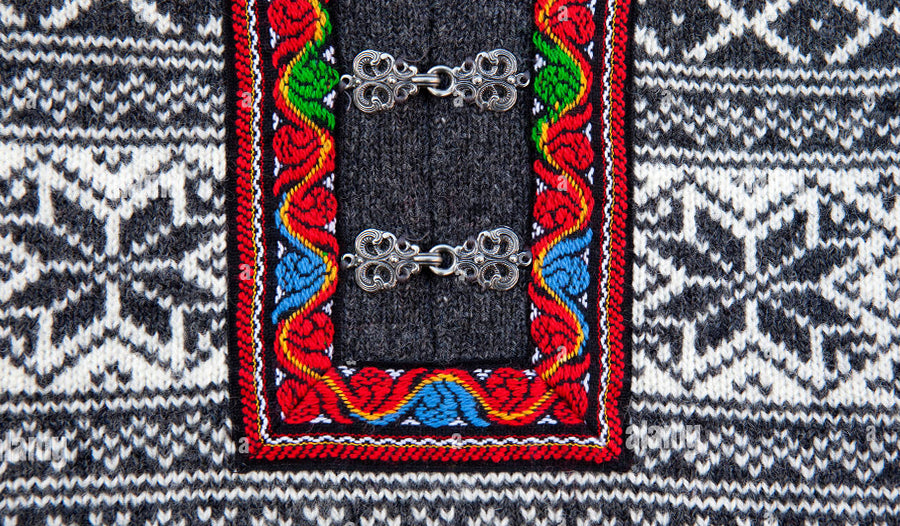
THE ICONIC LICE SWEATER OF NORWAY

Did you enjoy our article last week about Annemor Sundbø, Norwegian sweater detective?
This week we're sharing a snippet of her article in Issue 104 Keeping Warm, all about woolen lice patterned sweaters or Lusekofta. You can also watch the hour-long episode of Norwegian Craft Traditions with Arne and Carlos (below) in which the twosome explore the story of lice sweaters with Annemor.
Norwegian woollen lice patterned sweaters are the appropriate dress for meeting up at the royal castle for an audience with the king. Winter sport idols and national sport teams perform and compete in these star-decorated sweaters on ski slopes; they shine and glitter up there on the winner’s podium. In 1994, a traditional lice patterned sweater dressed His Highness Crown Prince Haakon Magnus as he lit the Olympic flame, a symbol of continuity between ancient and modern times.

Knitted woollen sweaters developed in the beginning of the 1800s, inspired by the imported silk knitted night shirts called nat-trøye in Norwegian. The Napoleonic Wars caused imports from France to cease as silk was restricted. Local wool was the obvious alternative for knitted shirts, as insulation for the cold climate. Nato con la camicia is an Italian expression for being born with good luck, like being ‘born in caul’, the phrase used for babies born inside the intact amniotic sac. Folklore suggests that the seamless shirt possessed a special protecting power to bring fortune and repel all sorts of evil.
Early knitted sweaters in Norway were decorated with coded symbols, like the Northern star–the star of love, victory and resurrection. Dying was referred to as ‘sleeping in’ and these night shirts were, according to folk belief, a sort of amulet garment while resting in ‘the Kingdom of Night’, waiting to wake up and receive the Lord’s judgement.
As a part of the national folk costume, lice pattern sweaters were introduced in the mid 1800s. The distinct black and white design decorated with eye catching and colourful wool embroidery had deep roots in local folk art. Heritage was evident from a cultural standpoint, an important weapon in the fight to break union ties with Sweden...
--
Extract from the article The Hand Knit: Norwegian Lusekofta, written by Annemor Sundbø in Issue 104 Keeping Warm.
Find out how to read the rest of the article here:

